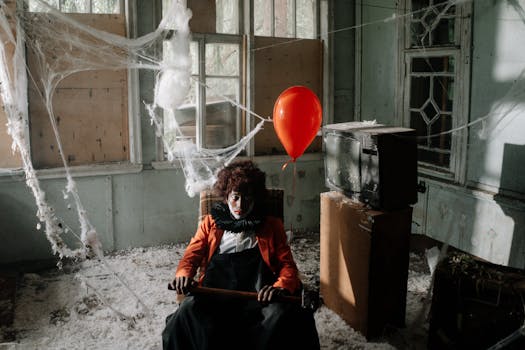Movies
Why Some Movie Franchises Last and Others Fade
Discover actionable reasons why certain movie franchises remain beloved and others disappear. Get expert insights, examples, and clear steps inspired by Hollywood’s most enduring cinematic universes.
Advertisement
Fans quote lines, wear merch, and celebrate releases from movie franchises that just don’t seem to quit. Yet, other series vanish with a whimper, leaving little trace in the cultural memory, despite sometimes starting big.
People notice the difference between those movie franchises that stay relevant and those that fall from favor. There’s a clear gap between what works to keep us hooked for decades and what fizzles early.
This article dives into practical truths and case studies, revealing solid methods and real-world habits behind movie franchises that endure. Engage with tactics, resources, and analogies you can see at work today.
Crafting Compelling Universes Sustains Fan Loyalty
Every lasting movie franchise delivers a universe fans recognize instantly—a place that promises new adventures, without losing its core rules, symbols, or values.
Viewers say things like, “I know what to expect from this saga even when they surprise me.” That sense of consistency, built through design and story details, makes audiences want to return each release.
Designing Recurring Visual Motifs
Hands automatically reach for Star Wars posters or Harry Potter scarves when these movie franchises announce something new. Recognizable motifs—colors, props, symbols—anchor the audience back in the world, creating instant recognition.
Film teams choose consistent palettes and recurring sets, helping viewers orient themselves and feel like insiders. Copy this by choosing two or three strong symbols for your creative project and using them intentionally.
Think of Jurassic Park’s gates, which signal “welcome back!” at every entry. Work recurring visuals into your own hobby videos to mimic this familiarity, making your audience feel right at home.
Expanding Lore Without Breaking the Foundation
Teams behind long-lasting franchises like James Bond add new gadgets and scenarios with each film. Yet, Bond’s core—a suave spy facing global threats—remains steady, anchoring all the changes.
Successful franchises offer “what’s new?” but never change what matters at the heart. When trying something innovative in your own creative work, ground it in what matters to your core fans.
If you run a movie trivia night, switch up the films but keep the tone and traditions intact. This lets fans trust the experience, just as loyal movie franchise followers do long-term.
| Franchise | Consistency (Story/Visual) | Expansion Technique | Key Takeaway |
|---|---|---|---|
| Star Wars | High (Same universe rules and themes) | Spin-offs, timelines, cross-media | Maintain core, branch carefully. |
| Marvel Cinematic Universe | High (Recursive character arcs) | Linked events, cameos, TV series | Allow overlap; reward loyal viewing. |
| Transformers | Spotty (Visuals varied, plot reset) | Reboots, prequels, uneven timeline | Reboots risk alienating. |
| Jurassic Park/World | Strong (Iconic gates, recurring musical cues) | Next-generation cast, nostalgic callbacks | Nostalgia plus new faces wins. |
| Pirates of the Caribbean | Medium (Shifting tones, stable world) | Focus on main character, new islands | Decide if tone or plot matters more. |
Balancing Fan Service and Fresh Stories Grows Engagement
Effective storytellers deliver what audiences crave without slipping into tired repetition. Movie franchises achieve growth by honoring core elements while weaving in new, timely ideas or genres.
Writers follow simple rules: serve longtime fans with callbacks and in-jokes, but avoid alienating newcomers. Marvel movies, for instance, weave legacy Easter eggs into genuinely new plots and emotional stakes.
Delivering Callbacks That Advance the Story
Smart scripts bring back beloved lines or characters only when it pushes the current story forward. In Fast and Furious, car choices nod to earlier films, but also reveal maturation of characters or new goals.
Use callbacks in your own events, but only if they genuinely reward attention or signal real growth. Teasing in-jokes works best when linked to new stakes that keep things fresh, not static.
- Reference a previous win at a trivia night to excite loyal players and reinforce team pride.
- Reward viewers noticing your old logo with a special discount code, tying nostalgia to new experiences.
- Select music tracks or sound effects with history for team moments to elicit group emotion and raise stakes.
- Work in subtle nods for returning fans that don’t confuse first-timers—clarity matters more than obscurity.
- Update your theme colors for a season, referencing the original scheme to show respect for shared roots.
Franchises falter when callbacks become a checklist, not a living part of character arcs or world progress—root your references in what advances real stakes.
Refreshing Themes to Meet Changing Times
New entries strike gold when they adapt to the culture of the moment. The Planet of the Apes series leveraged social commentary, using current anxieties to transform classic sci-fi into relevance for new generations.
This approach requires teams to listen to fan feedback and wider conversations, then shape scripts to reflect shifting hopes, fears, or humor.
- Survey your audience regularly to catch mood shifts, then integrate learnings into your next project.
- Switch up the pacing or tone based on what’s resonating—a lively event for upbeat times, or mellow for reflective groups.
- Test two or three new segment ideas, then adjust based on audience energy and comments.
- Spot trending phrases or inside jokes and let these inspire your next introduction or promo.
- Reflect current values in small ways, such as updating a character or mascot look to be more inclusive.
Always ground newness in respect for the core world or characters. This blend revitalizes audiences, letting them grow with the franchise’s own journey.
Building Character Arcs People Want to Follow
Movie franchises endure when their heroes and villains show change—mistakes, lessons, and growth. People relate to characters who make choices and face consequences that echo real life, not cartoonish static roles.
Showing Growth Through Consistent Motivation
Harry Potter matures over seven films, learning courage, loss, and self-worth. His path mirrors a student’s real-life hurdles—struggles, friendships, and bittersweet wins—anchoring fantasy with relatable steps.
Writers draft arcs on a wall, ensuring each sequel delivers a clear shift (“last time she fled; this time she stands her ground”). Fans invest deeper as they see real, incremental progress played out.
Copy this by spelling out in one sentence how your own character—real or fictional—acts differently as their journey continues.
Revealing Flaws and Strengths in Unpredictable Scenarios
Memorable movie franchises test main characters in new, specific contexts. In The Dark Knight trilogy, Bruce Wayne faces not just crime, but themes of legacy and the cost of his choices, each sequel peeling back new layers.
Additional supporting characters—like Tony Stark’s evolving relationship with his team—help reveal strengths and frailties. A little unpredictability keeps performances from feeling stale or repetitive.
Challenge yourself by writing or planning one new scenario where your character’s biggest strength works against them. This keeps arcs lively and relatable.
Adaptability in Production and Marketing Fuels Longevity
Franchise success hinges on teams responding to everything from new tech to audience reactions in creative, concrete ways. Over time, loyal fans notice when brands adapt their approach.
Implementing Responsive Marketing Campaigns
Successful movie franchises—like Marvel or Fast and Furious—pivot their advertising strategies. If fan excitement drops, studios ramp up character-driven teasers, interactive events, or early fan screenings, keeping the buzz genuine and personal.
Behind the scenes, marketing teams measure trailer reactions and ticket pre-orders, making rapid-fire decisions on where to invest for max impact. If a poster misses, next week’s materials get a new look and updated messaging.
You can do the same with any shared project: listen to feedback, tweak visuals and language, and prioritize what activates your community.
Upgrading Technology Without Losing Identity
Star Wars expanded into CGI and new filming methods over time but used updated tools to enhance, never erase, the lived-in world. Effects come second to storytelling; don’t let tech overwhelm personality.
Film teams set limits on how many new effects or platforms to try per installment. They focus on the emotion of a scene, letting tools serve story—not the other way around.
Test a new graphic or platform for your work, but stick with one or two changes at a time, measuring how each tweak lands before moving on. Slow evolution fosters continuity.
Staying Power: Applying Film Franchise Lessons Anywhere
Enduring movie franchises depend on recurring symbols, evolving stories, and characters regulars want to revisit. By balancing consistency with newness—while responding to culture and feedback—they achieve rare loyalty and relevance across generations.
Our daily creative projects, community groups, or recurring events can use these lessons: nurture your core elements, reward loyalty with gentle innovation, and invite real feedback each step of the way.
Copy movie franchise wisdom by blending nostalgia with forward momentum, creating an experience that grows while honoring its roots. The next time you build—or revisit—your own project, prioritize both tradition and positive change for lasting engagement.
You may also like

Movies That Defined Each Decade in Film History: An Essential Guide
Trace film history through defining movies that captured each decade’s spirit and cultural transformation.
Keep Reading
The Role of Color Palettes in Visual Storytelling: Cinematic Techniques in Focus
Explore color palettes in film that shape mood, express emotion, and create powerful visual signatures that endure.
Keep Reading


